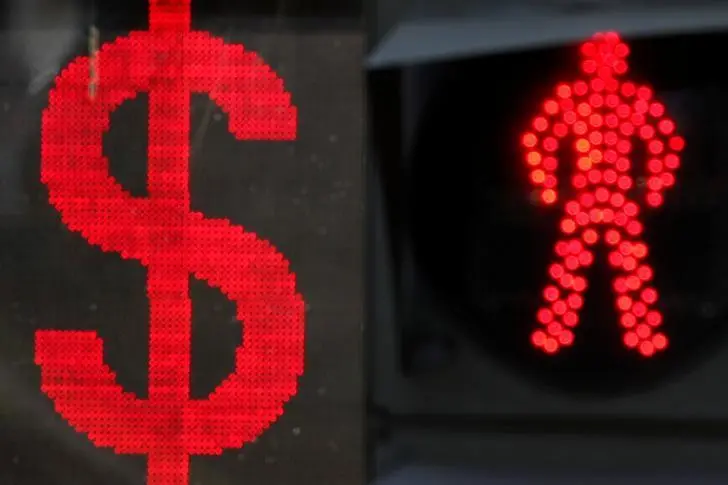PHOTO
LONDON- Whether we get an entrenched spiral or just an ephemeral price burst, a Spring of hair-raising inflation anxiety is proving notoriously hard for markets to price.
Spooked by a backup in long-term borrowing rates over the past month, which the Federal Reserve appears relaxed about despite protests from other central banks, investors have engaged in another dizzying and somewhat confusing rotation of stocks, sectors, regions and currencies this month.
It's seen another swoon in expensive lockdown stars of the tech sector in favour of beaten down 'value' stocks in the energy, banking, industrials and even retail and travel sectors, as vaccine rollouts and monster U.S. government stimulus spur bets on a rapid and steep economic recovery.
Monday's price action was extraordinary. The tech-heavy Nasdaq ended down 2.4% while the Dow Jones Industrial Average gained almost 1%. Euro zone stocks ended 2.5% higher, but emerging market equities skidded 2.3%.
Both the Nasdaq and MSCI's main emerging market stock index recorded technical 10% corrections from February peaks.
The picture was more confusing as emerging markets had been seen in the 'value' camp until recently - but only as long as U.S. bond yields and the dollar kept falling.
As those two pivotal bellwethers have backed up sharply, emerging clouds have gathered again and the sector now apes Big Tech instead.
Whether all this turns out to be a few days of scattergun trading or endures now hinges on a withering few months of heavily distorted inflation statistics - the bond market pricing around them and central bank reaction function as they emerge.
As has been the case for most of the pandemic shock, 'duration', or interest rate sensitivity, is driving everything - stocks, bonds, regions and commodities.
The 'long duration' quality of tech and 'growth' stocks, for example, stems from how current valuations of firms with expected cashflows far into the future are disproportionately affected by shifts in the discount rates used - typically bond yields.
A flooring of global bond yields to near zero as COVID-19 shut the world economy last year was one key catalyst of the tech-led surge back to record highs and beyond by August.
But it also hinged on those low discount rates persisting for years. And that's where the looming inflation scare - however temporary - is upsetting the apple cart.
Right now, markets can't yet decide comfortably whether the Fed and other central banks will remain as calm as they currently claim they will be about the coming inflation 'hump'.
Thanks mainly to base effects from a doubling of oil prices from last year's Spring shock, rebounding food and commodity prices, sales tax changes and supply bottlenecks as economies reopen, headline inflation rates could double from here to more than 3% this year before subsiding.
Forecasts show headline U.S. annual consumer prices already accelerating to pre-pandemic levels of 1.8% in February from 1.4% the previous month - and that's before many of the key base effects kick in from March and through the Spring.
INFLATION SURPRISE
Bond markets take some of that with a pinch of salt. Even if pricing sustained inflation as high as 2.50% on a 5-year view, inflation pricing subsides again to 2.20% over 10 years and 2.15% over a 30-year horizon.
For all the disruption this seems to be causing, these are hardly scary numbers historically, and 'core' rates stripping out all the noise will likely be closer to 2% all year.
Not only is that in line with official forecasts, the Fed is actually targetting 2-3% inflation for the period so it has some chance of meeting its 2% average inflation target over time.
Market unease is partly because 10-year Treasury yields of 1.6% still leave inflation-adjusted 'real' rates deeply negative over that horizon - to the tune of 0.65%.
And that's even as the world's biggest economy is set to exceed pre-pandemic output projections as soon as this year, according to the Organization for Economic Cooperation and Development (OECD) forecasts on Tuesday.
The other reason may be that investors are sceptical of forecasts.
"U.S. inflation releases this Spring will present a key test for market stability even if the consensus expects an acceleration in price pressures," wrote JPMorgan strategist John Normand, adding that the rare periods since 2000 that inflation exceeded forecasts was during episodes when it was rising.
"Inflation forecasters are too conservative on the way up and on the way down," he said.
If so, it's not hard to see 10-year Treasury yields climbing another 50 basis points before really changing the picture a great deal. And that would certainly underline the ongoing duration wobble in equities as well as long-dated debt, which saw 30-year bond prices drop 8% over the past month.
The risk of an inflation accident also looks responsible for peculiarly aggressive Fed rate rise pricing too - where futures now show a quarter-point hike by the end of 2022 and two more during 2023.
That's even as the Fed signals policy stasis until 2023 and current 3-year Treasury yields covering that time horizon still only yield 0.32%. What's more, the yield curve between 5 years and 30 years has slipped again to its flattest since January.
Something may have to give. Governments, not to mention antsy investors, hope the OECD version of events is correct.
"Transitory factors that push up headline inflation do not warrant changes in the policy stance," its interim world economic report said.
(By Mike Dolan, Twitter: @reutersMikeD. Rotation chart by Thyagu Adinarayan. Editing by Jan Harvey) ((mike.dolan@thomsonreuters.com; +44 207 542 8488; Reuters Messaging: mike.dolan.reuters.com@thomsonreuters.net))












